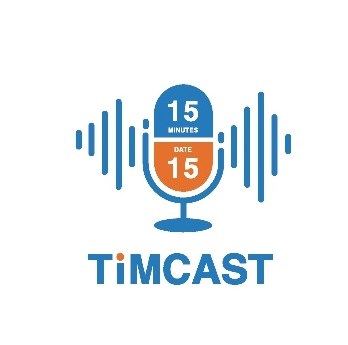The (Bleak?) Future of Departure Control Systems
When the Travel in Motion team was brainstorming about what the subject of our next blog and TiMCAST should be, I proposed the topic of the future of Departure Control Systems (DCS) in the context of order management. Our partner Daniel Friedli looked at me, smiled and said: “This will be our shortest ever blog, because there is no future for today’s systems of departure control”. As so often within the team, an interesting and energized discussion started, confirming that this an important topic. In the end, we agreed not to agree on the outcome related to the future of departure control systems, and here is why.
With the changes in the airline industry related to commercial business processes and the underlying technology systems, almost no areas remain untouched. That also goes for the DCS applications. These systems drive the “over the wing” passenger check in and boarding processes, and in addition very often the “under the wing” weight and balance of the aircraft. While the “under the wing” utilisation of DCS is mainly an airport operational process with (hopefully) no influence on the passenger experience, the “over the wing” components of DCS are key to the passenger experience and to many airline processes before, during and after the journey.
Background
Over the past years, progress has been made allowing airline commercial systems to transform towards retailing and customer focused solutions as opposed to the flight related transactional legacy systems the industry. The New Distribution Capability (NDC), ONE Order, dynamic offers, the future of interline, and Settlement with Orders can all lead to process simplification should the airlines chose to embrace them. From a technology perspective, the implementation of these systems and the related potential new solutions will, at least partly, replace substantial parts of the traditional airline Passenger Service Systems (PSS) into which DCS is often embedded, or which feeds a third-party DCS with the relevant passenger and trip-related data.
To date, in the traditional environments, the reservation and ticketing components of the PSS would feed the DCS, either directly through interactive data exchange (especially if the DCS was a component of the PSS) or through forms of offline data exchange via a method often in EDIFACT-based legacy formats and teletype. In essence, the DCS was designed to support the passenger process for checkin and boarding in a very rigid and legacy-driven way. This demonstrates the potential to modernise this process, especially as leveraging passenger touch points for ancillary sales, improved passenger experience and learning about passenger behaviour was not core to the processes supported by a DCS.
The challenge for “over the wing”
As mentioned, the “over the wing” part refers to the actual check-in of the customer and related baggage, government data exchange, seat assignments and the boarding process. Currently, this solution is often a part of a traditional PSS or a stand-alone system if the PSS does not include this or if, for example, operational or regulatory reasons mean the PSS DCS cannot be used. By its legacy system nature and its lack of focus on the passenger experience, business opportunities such as the upsell of ancillaries during these airport processes is very often a challenge. The challenge can be characterised by the overly complex process of selling services and collecting payments during checkin. In addition, there is the lack of a 360-degree view of the customer to provide individual and dynamic services. This also leads to an inconsistent customer experience, driven by different system environments, best manifested at numerous different touch points, such as check in desks, kiosks, and self-bag drops at the airport. To make matters worse, the same airline could use different vendors’ solutions at different airports, all with differing levels of capabilities.
The opportunity
With the advent of ONE Order, or the concept of the order in general, the value of legacy DCS – as an IT solution, not the business processes and practices it addresses – is put in question. And, while the need for such systems will remain for years to come, the industry will witness a transition to more interactive and retail-focused solutions which will rely on the interaction with the order as a single source of truth. The DCS of the future might basically be a user interface on any device which interacts with the order management solution to query which customer is about to travel, what the individual’s needs could be and dynamically propose ancillary services, trigger the exchange of data with governments and update information received. Further, the “check-in status” will be recorded in the order directly, as will information such as baggage tag numbers, seat assignments, advanced passenger information status and other relevant travel data. But the order will be the one and only master record as a single source of truth, allowing various transactions from different system to simultaneously update the order in real-time. Through this the customer will be individually identified at every single touch point during the check in, boarding process and upon arrival. By accessing the order, as well as the customer profile, individualised offers and tailored services can be created for the traveller. This can greatly enhance the customer experience as well as the airline’s servicing and sales opportunities, and greatly streamline airline processes, increase their revenue, and increase customer satisfaction.
Our conclusion
The need for a system that supports the passenger airport process will remain. Not only legal and regulatory requirements such as advanced passenger information demonstrate the need for such systems but also the inherent capability to “register” a customers readiness to travel. However, the facilitation of these processes will be integrated into the airline’s order system more and more, should the airline choose to enter this strategic path. In these cases, we will see a merge of the traditional DCS capabilities into Order Management Systems (OMS). Albeit for years to come, many airlines will remain on legacy PSS, and specific airport environments will dictate a legacy DCS as we know it today.
So, in essence there is no clear “yes or no” answer about the future of DCS – it is the famous “it depends”. While the need for “under the wing” operational support systems such as weight and balance systems will remain, the future of the “over the wing” depends on the path an airline takes: will its commercial operations be based on full offer and order, what are the requirements of the local airport environment and, last but not least, how big is the appetite to innovate and transform?
But there is at least one consistency: within the TiM Team we had another enticing discussion. And, even if we were not all completely aligned, we did agree that we, as avid industry observers, will closely follow the developments and continue assessing the need and feasibility of the DCS as it is today.
This post has been published in collaboration with Terrapinn.
(Boris Padovan, 4. October 2022)











